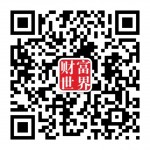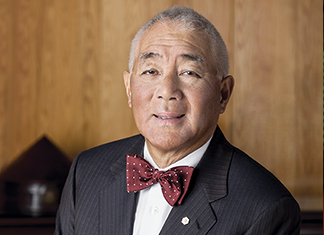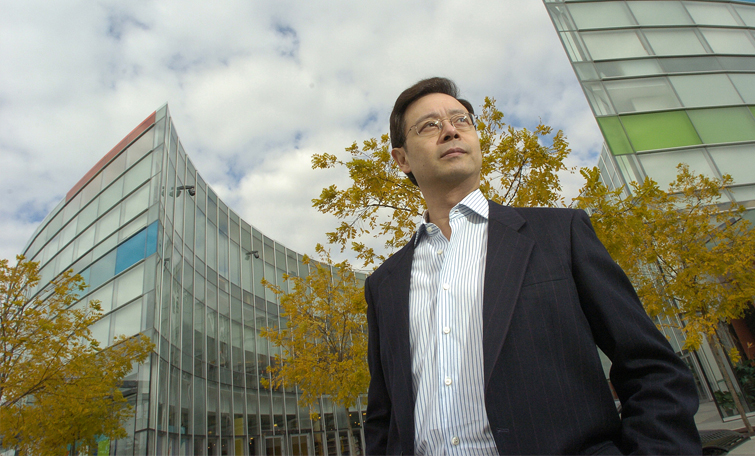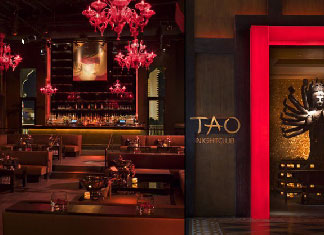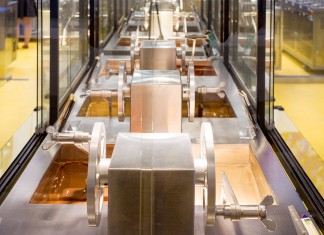North America's Asian Connection Set for Takeoff
- Caifu Magazine | by Caifu Global
- EN
By: Sara Donelly

Descending into Vancouver on a clear day, travellers are greeted by a stunning jewel of a city. Surrounded by majestic snow capped mountains, the sparkling Pacific Ocean and bracing clean air, it's a stunning tableau. The next place visitors will encounter is the Vancouver International airport (YVR). As the first and often only impression many will have of the city and province, YVR has endeavoured to represent the unique culture of British Columbia, and provide its guests with the softest landing possible.
As Canada's second busiest airport, (after Toronto's Pearson) YVR welcomed 19.4 million passengers in 2014. Fifty three airlines serve YVR with 110 nonstop destinations worldwide. In the past few years, the airport has undertaken an aggressive improvement and expansion program with the goal of serving 25 million passengers by 2020 and becoming the preferred airport hub between Asia and the Americas.
In 2011 the airport enacted a program aiming to encourage airlines to start more flights between Vancouver and Asia, and has seen tremendous growth from it's Asia-Pacific market thanks to increased air services, terminal improvements and ambitious initiatives.
In 2014 it significantly increased it's presence in Asia through the expansion of it's Hong Kong office, and the arrival of Dreamliner aircraft from Japan Airlines, China Southern and Air Canada.
Asia-Pacific is one of the strongest markets in the world, and YVR has been working to attract more routes between Vancouver and Asia. Currently YVR has the most connections to Asia in all of Canada and the second most in North America with 13 airlines servicing this market.
Traffic between YVR and the Asia-Pacific region reached almost three million passengers in 2014, up 9.8 percent over 2013, with traffic to Mainland China up 6.7 percent.
YVR has strong linkages to China in particular with more than 70 flights per week during the summer and 59 flights per week the rest of the year. In total, 13 airlines fly to the Asia-Pacific region from YVR, with eight carriers flying to the Greater China Region, including Taiwan and Hong Kong. YVR is the only airport in North America with service from four mainland China carriers.
China Eastern Airlines recently announced a new service between Vancouver and Kunming, China. Vancouver is the first North American destination to be linked to Kunming. This service links YVR to the next phase of China's growth beyond the major cities. The Kunming-Shanghai-YVR service will bring in passengers from neighbouring provinces of Guizhou and Sichuan, expanding YVR's reach deep into southwest China. This service is recognition of YVR's importance as a gateway hub.
It also recently signed an agreement with Shanghai Pudong International Airport to collaborate on improving the perishable goods supply chain between Vancouver and Shanghai. This will expand cargo service which last year saw 250,000 tonnes of cargo moved through YVR.
Another project the airport is currently expanding is the Transit Without Visa (TWOV) program. This program allows passengers aboard international flights to connect through YVR en route to another international destination without a Canadian visa. China Eastern Airlines recently obtained approval to be part of the TWOV program. They expect to be operational with this program in the near future.
YVR was named the number one airport in North America for the sixth consecutive year by the Skytrax World Airport Awards- a first in the history of the awards. The award is voted on by 13 million passengers, totally unsolicited and based on a wide variety of factors including customer care, airport efficiency, shopping, dining and more. YVR also received a 91% customer satisfaction rating from customers in 2014.
The airport offers language support, both in person from customer care staff and volunteers, as well as signage which is in English, French and Chinese. Arriving passengers who are transferring to another flight will notice how easy it is to do so at YVR. The airport has been working to make the connections of passengers and their bags as seamless and efficient as possible. A recent example can be seen with the A-B Connector, the new addition to the Domestic Terminal. This expansion means that a passenger could arrive from Beijing and connect to a domestic gate en route to Prince George, Calgary or Toronto in less than an hour.
For many visitors, YVR is the first and last impression of British Columbia. This airport reflects the province’s diverse landscape and people. The art and architecture celebrate the natural beauty and the cultural heritage of BC while recalling the memories of significant local community icons and experiences. YVR also houses the largest privately owned curated collection of public displayed Northwest Coast Native art in the world.
With more than 170 shops, services and restaurants, ranging from the comforts of four Plaza Premium Lounges to duty free shopping, Airport Butler services, and free Wi-Fi throughout the airport visitors are well taken care of. Other technological advances at YVR have helped the overall design of airports around the world to ensure efficiency in operations.
A recent example is the BorderXpress Automated Passport Control kiosks which helps speed up the U.S. Customs and Border Protection (CBP) process by up to 50%. Developed at YVR, they are currently being used in 20 airports across Canada, the United States and the Caribbean and have helped millions of passengers through the US and Canadian border processes.
Transiting through YVR has also been made easy with The China Transit Program (CTP). This program allows foreign nationals from China to arrive in Canada en route to the US, without needing a visa. CTP applies to passengers leaving from Beijing, Guangzhou, Shanghai, Hong Kong, Manila and Taipei on the following airlines Air Canada, Air China, Cathay Pacific, China Southern, Philippine Airlines, WestJet, Jazz Air, Sky Regional Airlines Inc. and Air Canada Rouge.
YVR prides itself on providing an accessible airport for everyone. There are 24-hour Customer Care employees and Green Coat volunteers to help travellers with any questions or assistance they may require. Many of the Green Coat volunteers speak another language, with over 30 languages being represented between the 500 volunteers. Travellers also have access to a Language Line service that provides translations into 170 Languages. All of the signage and maps are in English, French and Chinese. And just recently, YVR joined Weibo, and responds to inquiries on that channel.
The latest project of the Vancouver Airport Authority is a partnership with Europe’s leading owner, developer and manager of designer outlets, McArthurGlen Group. A luxury designer outlet centre near YVR is slated to open later this spring. Located just a few minutes from the terminal, this shopping destination will create 1,000 new jobs once all phases are open; there will be 600 jobs created this year and 400 more once phase two is complete.
It will be McArthurGlen’s first designer outlet in North America, and the centre is expected to draw customers from in and around Vancouver as well as visitors to the region. It also is adjacent to the Canada Line's Templeton station, making it just three minutes from YVR and 30 minutes from downtown Vancouver on the rapid-transit line.
As a signature feature of McArthurGlen Designer Outlets in Europe, The McArthurGlen Designer Outlet Vancouver Airport is designed as an open-air village with two luxury piazzas and pedestrian-friendly walkways and tree-lined streets.
The centre is being developed in two phases: the first phase will offer 240,000 sq ft of retail space, including many sought-after North American and European luxury, designer and lifestyle brands, as well as restaurants and cafes, with an additional 135,000 sq ft once the second phase is complete.



